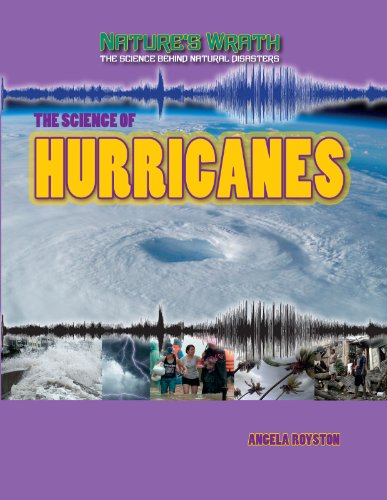-
The Science of Tsunamis
Leon Gray
Library Binding (Gareth Stevens Pub Learning library, Jan. 1, 2013)Tsunamis can involve waves that move as fast as passenger jets and grow to heights taller than skyscrapers. As astonishing as these huge waves might be, theyre also a deadly phenomenon happening more often around the world. Readers will encounter some of the most destructive tsunamis of all time while they explore the science behind these occurrences. An explanation of plate tectonics and wave formations are a few of the exciting science concepts that readers are introduced to through real-life examples and lots of surprising facts. Full-color photographs and detailed illustrations will guide readers through one of natures scariest disasters, while highlighting the populations tsunamis have affectedand those they will affect in the future. O
O
-
The Science of Tsunamis
Leon Gray
Paperback (Gareth Stevens Pub Learning library, Jan. 1, 2013)Introduces tsunamis, discussing their causes, the nature of a wave, the destruction they bring, and how scientists study them. Q
Q
-
The Science of Hurricanes
Angela Royston
Paperback (Gareth Stevens Pub Learning library, Jan. 1, 2013)Introduces hurricanes, discussing their causes, how to prepare for a storm, the damage they bring, and the post-disaster rebuilding process. T
T
-
Hurricanes: The Science Behind Killer Storms
Dr Alvin Silverstein, Dr Virginia Silverstein, Laura Silverstein Nunn
Library Binding (Enslow Pub Inc, June 1, 2009)"Examines the science behind hurricanes, including how and where tropical storms form, the various types of tropical storms, how scientists track hurricanes, and provides hurricane safety tips"--Provided by publisher. Y
Y
-
Wildfires: The Science Behind Raging Infernos
Dr Alvin Silverstein, Dr Virginia Silverstein, Laura Silverstein Nunn
Library Binding (Enslow Pub Inc, Sept. 1, 2009)Examines the science behind wildfires, including what causes them, the different types of wildfires, their devastating effects, and how to stay safe during a wildfire. U
U
-
The Science of Volcanoes
Angela Royston
Paperback (Gareth Stevens Pub Learning library, Jan. 1, 2013)Introduces volcanoes, discussing the causes, types, and effects of eruptions and how volcanologists study them. T
T
-
Floods: The Science Behind Raging Waters and Mudslides
Dr Alvin Silverstein, Dr Virginia Silverstein, Laura Silverstein Nunn
Library Binding (Enslow Publishers, Sept. 1, 2009)What makes a rainstorm turn into a raging flood or a destructive mudslide? Learn what causes severe weather storms and the resulting floods and learn how we can prepare ourselves to be safe. FLOODS: THE SCIENCE BEHIND RAGING WATERS AND MUDSLIDES explores the causes behind these disasters and how scientists study them. Z
Z
-
The Science of Avalanches
Louise Spilsbury
Paperback (Gareth Stevens Pub Learning library, Jan. 1, 2013)Discusses different types of avalanches, describing the conditions that can cause them and the tools scientists use to predict where one may occur. T
T
-
The Science of Earthquakes
Matt Anniss
Paperback (Gareth Stevens Pub Learning library, Jan. 1, 2013)Introduces earthquakes, discussing what causes them, the destruction they cause, how scientists study them, and how to stay safe if an earthquake hits. T
T
-
The Science of Tornadoes
Matt Anniss
Paperback (Gareth Stevens Pub Learning library, Jan. 1, 2013)Introduces tornadoes, discussing their causes, different types, unpredictability, and some examples of destructive storms of the recent past. W
W
-
The Science of Hurricanes
Angela Royston
Library Binding (Gareth Stevens Pub Learning library, Jan. 1, 2013)When the intense winds of a hurricane start to blow, they sound like a freight train coming. Depending where in the world this huge storm hits, it might be called a cyclone or a typhoon. But location doesnt make the hurricane-level wind and rain any less devastating. Readers will learn all about the causes of hurricanes, and their disastrous effects. Vivid photographs will amplify accessible science content as well as examples of some of the worst hurricanes in recent history. With detailed timelines from 2005s Hurricane Katrina and several other storms, readers will be introduced to incredible science while encouraged to compound their knowledge and compassion about the world around them. T
T
-
Tornadoes: The Science Behind Terrible Twisters
Dr Alvin Silverstein, Dr Virginia Silverstein, Laura Silverstein Nunn
Library Binding (Enslow Pub Inc, June 1, 2009)"Discusses the science behind tornadoes, including how and where they form, the scientific methods to track and predict them, and tornado safety tips"--Provided by publisher. Z
Z